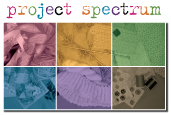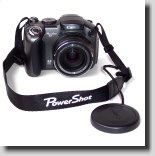
Want to add dimension and lots of visual interest to your projects? Fiber art beads will do the trick. There are many ways to create these little gems, but here is the way that I make them.
You will need the following supplies:
plastic drinking straws
fabric glue
fabric scraps
assorted yarns or fibers
beads
craft wire, 22 or 24 gauge
Begin by cutting your straws into 1 1/2″ widths (or whatever size you desire). Cut fabric scraps on the bias about a quarter inch wider than your straws and about 4 inches long. Dab a little fabric glue on the straw and begin wrapping the fabric around it. Reapply more glue as you wrap the fabric.

Wrapping fabric around plastic straw
Check to make sure the fabric is completely secured with fabric glue. This add stability and a little stiffness to the beads.
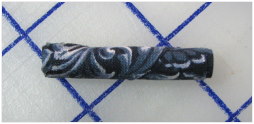
Wrapped Straw Piece
Cut some stands of various yarns or fibers. Place a small dab of fabric glue at one end and secure the end of the first yarn. Wrap the yarn around the bead in a spiral motion. Secure the end with fabric glue. Repeat this step for additional yarns.
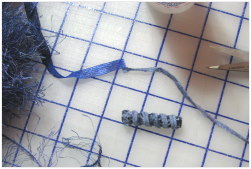
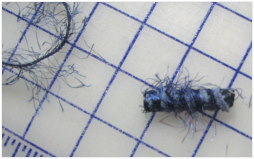
Wrapped Yarns
String craft wire through the center of the straw and wrap it around the exterior of the bead, leaving about a one inch tail. Twist the tail around the center wire to secure.

Wrapped Craft Wire
Measure out about 10 inches of wire from the end of the bead and cut.

String various size beads onto the wire and begin wrapping them around the bead in a spiral motion. I like to string a few beads at a time, wrap, and then repeat the process until I come to the opposite end of the bead.
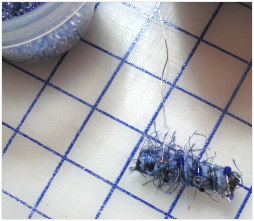
Stringing Beads
Once the beading is complete, push the wire end under the original wrapped wire and twist it back on itself to secure. I like to push the end of the wire into the bead so that there are no sharp edges on the surface of the bead.

Securing End of Wire
You may like to experiment with Angelina “fabric” rather than cloth. Also, try wrapping ribbon rather than fabric. Metal beads and other embellishments can be used in place of glass beads. Craft wire comes in many colors, so don’t limit yourself to silver and gold.
Note: I want to thank you again for your many comments, emails, and prayers for my family during this difficult time. My mother’s condition remains the same; we just take it one day at a time.
~~~~~~~~~~~~~~~~~~~~~~~~~~~~~~~
Rene




























































































